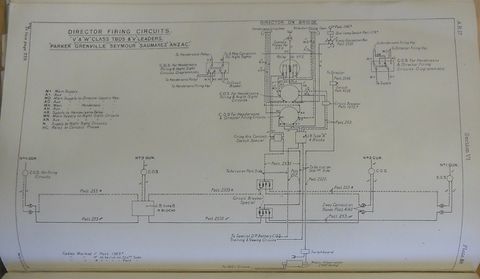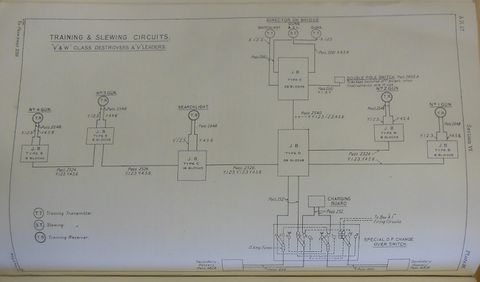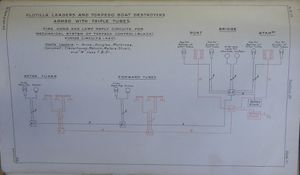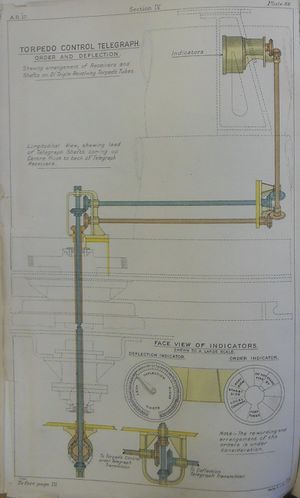"W" Class Destroyer (1917)
Twenty-one destroyers of the "W" Class were completed in 1917-1918. They were essentially the same design as the "V" class, but incorporated the triple torpedo tube mounts that had not been ready in time for the "V"s.
Late in the war, an additional order was placed for a large number of Modified "W" class destroyers, most of which were cancelled.
| Overview of 21 vessels | |||||
|---|---|---|---|---|---|
| Citations for this data available on individual ship pages | |||||
| Name | Builder | Laid Down | Launched | Completed | Fate |
| Wakeful | John Brown | 6 Oct, 1917 | Torpedoed 29 May, 1940 | ||
| Watchman | John Brown | 2 Nov, 1917 | 23 Jul, 1945 | ||
| Walpole | Doxford | 12 Feb, 1918 | 8 Feb, 1945 | ||
| Whitley | Doxford | 13 Apr, 1918 | Bombed 19 May, 1940 | ||
| Walker | Denny | 29 Nov, 1917 | 15 Mar, 1946 | ||
| Westcott | Denny | 14 Feb, 1918 | 8 Jan, 1946 | ||
| Walrus | Fairfield | 27 Dec, 1917 | Stranded 12 Feb, 1938 | ||
| Wolfhound | Fairfield | 14 Mar, 1918 | 18 Feb, 1948 | ||
| Warwick | Hawthorn Leslie | 28 Dec, 1917 | Torpedoed 20 Feb, 1944 | ||
| Wessex | Hawthorn Leslie | 12 Mar, 1918 | Sunk 24 May, 1940 | ||
| Voyager | A. Stephen | 8 May, 1918 | Grounded 23 Sep, 1942 | ||
| Whirlwind | Swan Hunter | 15 Dec, 1917 | Torpedoed 5 Jul, 1940 | ||
| Wrestler | Swan Hunter | 25 Feb, 1918 | 20 Jul, 1944 | ||
| Winchelsea | J. S. White | 15 Dec, 1917 | 20 Mar, 1945 | ||
| Winchester | J. S. White | 1 Feb, 1918 | 5 Mar, 1946 | ||
| Westminster | Scott | 1918 | 4 Mar, 1947 | ||
| Windsor | Scott | 21 Jun, 1918 | 4 Mar, 1947 | ||
| Wryneck | Palmer | 13 May, 1918 | Sunk 27 Apr, 1941 | ||
| Waterhen | Palmer | 26 Mar, 1918 | Foundered 30 Jun, 1941 | ||
| Wolsey | Thornycroft | 16 Mar, 1918 | 4 Mar, 1947 | ||
| Woolston | Thornycroft | 27 Apr, 1918 | 18 Feb, 1947 | ||
Armament
4-in Guns
Other Guns
Torpedoes
- Two Triple Revolving 21-in tubes[1]
Fire Control
Mid 1916 Outfit
Experiments from February with two Grand Fleet destroyers employing dumaresqs and Vickers Range Clocks and voicepipes showed definite advantages over ships using unaided spotting and voicepipes, even when the crews had no special training in the new equipment. Tests were also conducted to find a rangefinder suitable to the lively and cramped platform that destroyers provided. This led to an order on 3 April, 1916 that each T.B.D. of "M" class and later should be equipped with:[2][3]
- one Waymouth-Cooke sextant rangefinder
- one Vickers Clock
- one Dumaresq
- range and deflection receivers at each gun
Two ratings, trained before coming aboard, were added to the crew to work the equipment. The clocks and rangefinders were issued in the following three months, and the dumaresqs a few months later. The data instruments did not become available in numbers until 1917. By mid-1917, the whole system was broadly in place in the destroyers of the Grand Fleet and in the Harwich Force.[4] It seems likely that this class would have followed on the same pattern.[Inference]
In 1918, it was ordered that the Scott class flotilla leaders and destroyers of "V" and "W" classes should have range and deflection receivers for their 3-in H.A. guns and fire gongs worked off the firing key used for the ships' L.A. weaponry.[5]
Directors


In 1917, it was approved that the "V" class and later destroyers should all receive installations of the British Destroyer Director Firing System,[8] but none of these installations were completed prior to 1918.[9]
On 26 April, 1918, Wolsey had her director tilt tested at Southampton.[10]
In 1918, it was ordered that those destroyers with director installations were to additionally receive:[11]
- a voice pipe from T.S. to director
- a fire gong at director worked from existing push in T.S.
- a fire gong push on fore bridge to be added, wired in parallel to that in the T.S.
- the repeat receivers on the fore bridge were to be positioned so as to be visible to the director sightsetter.
Torpedo Control


The destroyers had sighting positions on both sides of a bridge that had been enlarged from earlier destroyers with firing pushes and keys for sounding buzzers at the tubes. The Chadburn's Torpedo Telegraph transmitters for both order and deflection transmitters were situated centrally on a panel on the bridge, between the two sights. Battery-worked electrical firing and firing gongs augmented this arrangement.[14]
Alterations
By November 1918, Warwick and Whirlwind were operating out of Dover and were equipped to carry 74 "M" type sinker mines. The torpedo tubes and guns removed when the mines were shipped could be placed back aboard with enough notice.[15]
See Also
Footnotes
- ↑ Annual Report of the Torpedo School, 1917. p. 210.
- ↑ The Technical History and Index, Vol. 3, Part 23. p. 31.
- ↑ Progress in Naval Gunnery, 1914-1918. p. 35.
- ↑ The Technical History and Index, Vol. 3, Part 23. pp. 31, 32.
- ↑ Annual Report of the Torpedo School, 1918. p. 376. (C.I.O. 11/18, G. 39278/17).
- ↑ Annual Report of the Torpedo School, 1917. Plate100.
- ↑ Annual Report of the Torpedo School, 1917. Plate101.
- ↑ Annual Report of the Torpedo School, 1917. p. 229.
- ↑ Progress in Naval Gunnery, 1914-1918. p. 37.
- ↑ Director Firing For Flotilla Leaders and Destroyers. p. 45.
- ↑ Annual Report of the Torpedo School, 1918. p. 376. (C.I.O. 1081/18, G. 24486/15).
- ↑ Annual Report of the Torpedo School, 1917. p. 210. Plate 82.
- ↑ Annual Report of the Torpedo School, 1917. Plate 86.
- ↑ Annual Report of the Torpedo School, 1917. pp. 210, 211. Plate 82.
- ↑ Annual Report of the Torpedo School, Mining Appendix, 1917-18. p. 11. Plate 7.
Bibliography
- Admiralty, Technical History Section (1920). The Technical History and Index: Alteration in Armaments of H.M. Ships during the War. Vol. 4, Part 34. C.B. 1515 (34) now O.U. 6171/20. At The National Archives, Kew, United Kingdom.
- March, Edgar J. (1966). British Destroyers: A History of Development, 1892-1953. London: Seeley Service & Co. Limited. (on Bookfinder.com).
- Gray, Randal (editor) (1985). Conway's All the World's Fighting Ships 1906–1921. London: Conway Maritime Press. (on Amazon.com and Amazon.co.uk).
| "W" Class Destroyer | |||||||||||||||||||||||||||||||||||||||||||||||||||||||||||||||||||||||||||||||||||||||||||||||||||||||||||||||||||||||
| Admiralty Design | |||||||||||||||||||||||||||||||||||||||||||||||||||||||||||||||||||||||||||||||||||||||||||||||||||||||||||||||||||||||
| Wakeful | Watchman | Walpole | Whitley | Walker | |||||||||||||||||||||||||||||||||||||||||||||||||||||||||||||||||||||||||||||||||||||||||||||||||||||||||||||||||||
| Westcott | Walrus | Wolfhound | Warwick | Wessex | |||||||||||||||||||||||||||||||||||||||||||||||||||||||||||||||||||||||||||||||||||||||||||||||||||||||||||||||||||
| Voyager | Whirlwind | Wrestler | Winchelsea | Winchester | |||||||||||||||||||||||||||||||||||||||||||||||||||||||||||||||||||||||||||||||||||||||||||||||||||||||||||||||||||
| Westminster | Windsor | Wryneck | Waterhen | ||||||||||||||||||||||||||||||||||||||||||||||||||||||||||||||||||||||||||||||||||||||||||||||||||||||||||||||||||||
| Thornycroft Specials | |||||||||||||||||||||||||||||||||||||||||||||||||||||||||||||||||||||||||||||||||||||||||||||||||||||||||||||||||||||||
| Wolsey | Woolston | ||||||||||||||||||||||||||||||||||||||||||||||||||||||||||||||||||||||||||||||||||||||||||||||||||||||||||||||||||||||
| <– | "V" Class | Destroyers (UK) | "S" Class | –> | |||||||||||||||||||||||||||||||||||||||||||||||||||||||||||||||||||||||||||||||||||||||||||||||||||||||||||||||||||